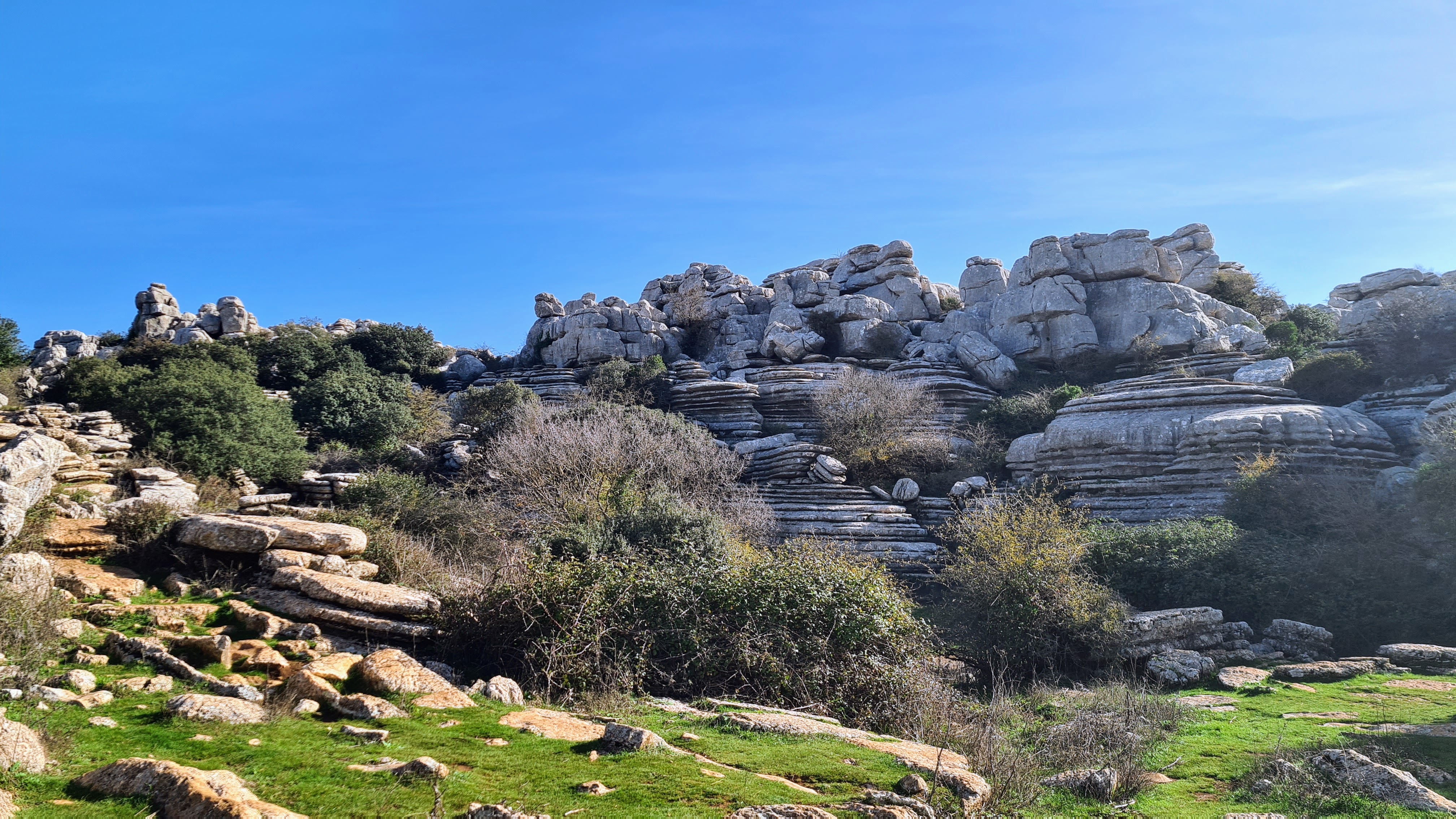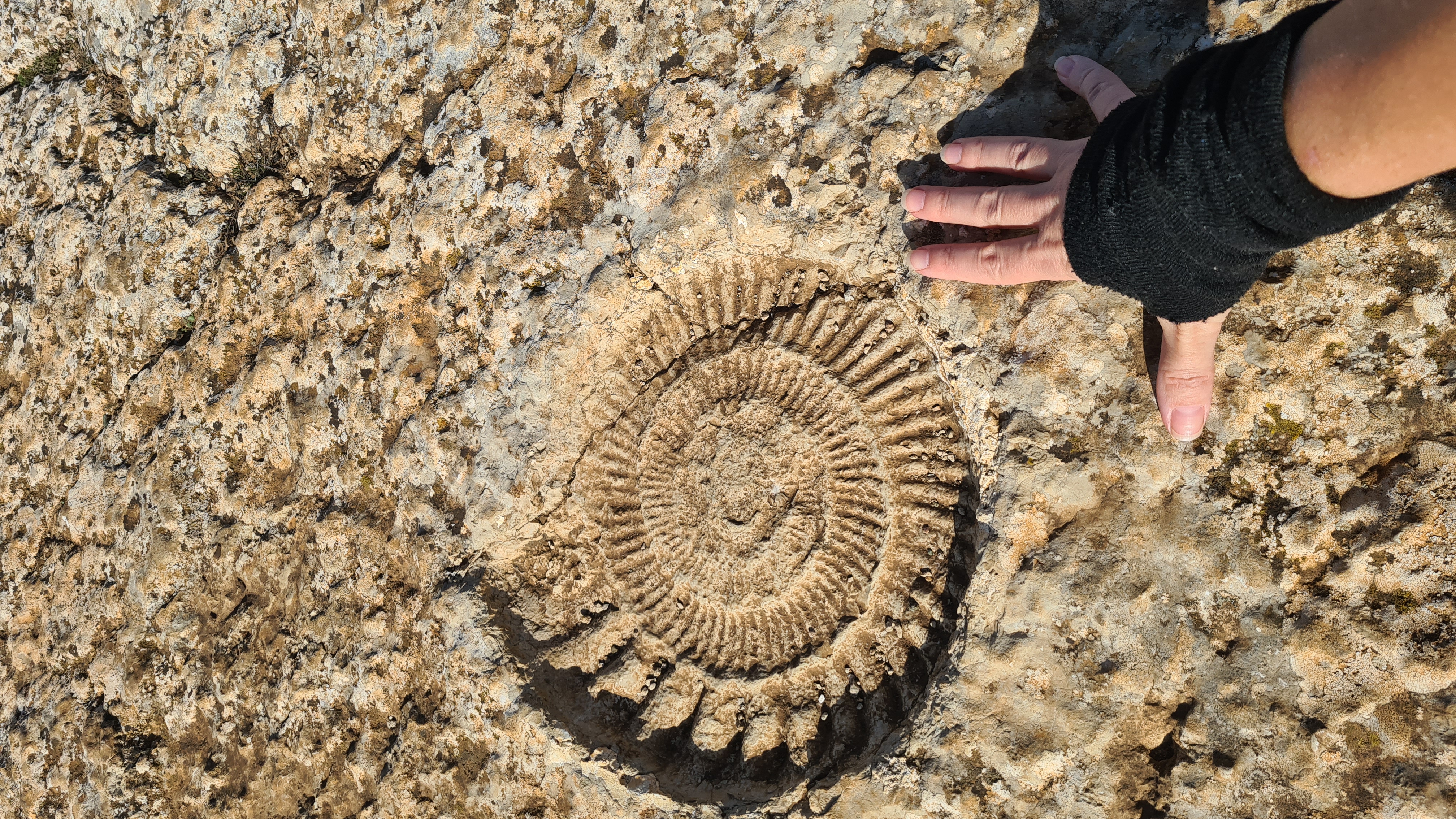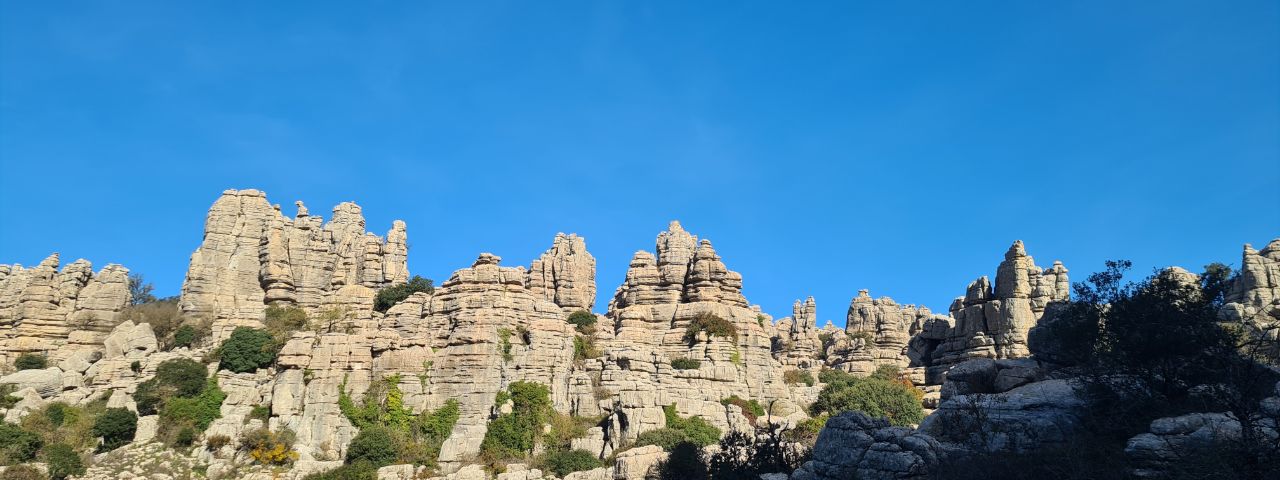We drag ourselves out of bed at an ungodly hour. Today promises an extraordinary adventure – our destination is the UNESCO World Heritage site, El Torcal de Antequera. Early birds catch the worms, but in this case, we’re hunting for rock formations that look like camels.
El Torcal de Antequera boasts a unique limestone karst landscape famous for its mind-bending rock formations. This otherworldly terrain emerged over millions of years as an ancient seabed rose from the depths and surrendered to geological processes – wind, rain, and temperature changes carved these impressive towers and plateaus. The area teems with rock formations resembling animals, objects, and even human silhouettes.

The name “Torcal” derives from the Spanish word “torca,” meaning sink. These labyrinthine columns and hollows once concealed resistance fighters – both during the French invasion and during Francisco Franco’s reign.
Franco’s dictatorship ranks among the most controversial periods in Spanish history. The Spanish Civil War erupted in 1936 and concluded in 1939 when Franco’s nationalists, backed by Nazi Germany (courtesy of Adolf Hitler) and Italy (thanks to Benito Mussolini), defeated the republicans. During Franco’s authoritarian regime, his forces brutally suppressed political opposition – countless republic supporters found themselves arrested, exiled, or executed. In the early years, Franco implemented isolationist policies that hampered the country’s economic development. He banned regional languages – Basque, Galician, and Catalan. “Solo castellano!” The hot-headed Basque separatists from ETA even attempted to assassinate him.

Surprisingly, Franco enjoyed considerable popularity among conservative citizens. They viewed him as the stabilizer who tamed a chaos-stricken country after the civil war, though at the expense of political freedoms. Before his death, he appointed Prince Juan Carlos as his successor, who, against all expectations, established a constitutional monarchy and democracy. The former dictator probably rolled in his grave at such audacity – not the legacy he had in mind.
Here’s an intriguing historical tidbit: one reason why the Spanish national anthem lacks lyrics relates to Franco’s rule. During his era, the anthem featured words glorifying the dictator himself and reflecting nationalist, authoritarian ideology. After his death, during the transition to democracy, officials reverted the anthem to an instrumental version without lyrics. Apparently, “♪ Franco is fantastic ♪” didn’t fit the new democratic vibe.
I strongly recommend arriving before 11 AM since the parking lot near the information center is tiny. If it fills up, you’ll need to park at the mountain base and rumble up the serpentine roads by bus (1.5 euros)
From the information center, three tourist routes branch out: green, yellow, and orange. In my opinion, yellow offers the optimal experience. It stretches about 3 km and takes roughly 2 hours to complete. The green route runs slightly shorter but skips the section where the path winds through a narrow passage between rocks. In a similar rock forest in Czechia, locals dubbed such a pathway a “mouse hole” – perfectly capturing its essence.

For Rorschach test enthusiasts, search for officially recognized shapes – camel, canary, sphinx, and other “valley residents.” We had the most fun discovering our own unique formations like Pinocchio or a dog! One person’s “majestic eagle” is another’s “my mother-in-law yelling.”
During your hike, about 5-10 minutes before reaching the information center, watch for a wooden post with an “X” mark on your right. Climb up the hill there – you’ll reach a plateau that left the biggest impression on us. This is where I found a perfectly preserved ammonite imprint. It’s a strange feeling to walk along mountain peaks and realize you’re treading on what was once the ocean floor.
The most awe-inspiring sight? Griffon vultures gliding overhead. These majestic birds exploit warm air currents rising along the mountains. Even an amateur ornithologist becomes mesmerized when 3-meter wingspan shadows pass silently above. You’ll want to linger on that summit, drinking in this emotion while hoping those carrion-eaters don’t start circling you specifically.

